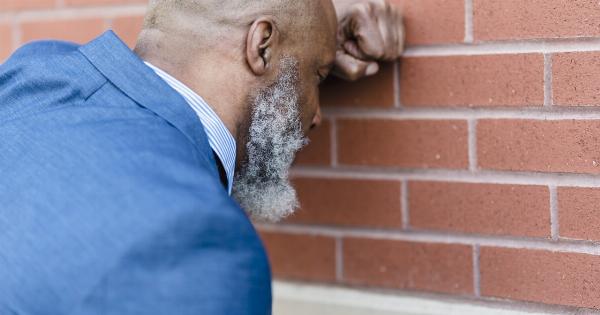If you have been experiencing discomfort or pain in your abdomen, it could be a sign of problematic stones in your bile. These stones, also known as gallstones, can interfere with the normal functioning of your gallbladder and cause a range of symptoms.
However, removing these stones doesn’t have to be a complicated or invasive procedure. In this article, we will explore some easy methods to remove problematic stones from your bile.
What are gallstones?
Gallstones are hardened deposits that form in the gallbladder, a small pear-shaped organ located beneath the liver. The gallbladder stores bile, a digestive fluid produced by the liver, which helps in the breakdown of fats.
Gallstones can range in size from a grain of sand to a golf ball, and they can be made up of cholesterol, bilirubin, or a combination of both.
Symptoms of gallstones
Gallstones can cause a variety of symptoms, depending on their size and location. Some common symptoms of gallstones include:.
- Intense abdominal pain, especially in the upper right quadrant
- Nausea and vomiting
- Jaundice (yellowing of the skin and eyes)
- Indigestion and bloating
- Back or shoulder pain
If you are experiencing any of these symptoms, it is important to consult with a healthcare professional for a proper diagnosis.
Non-surgical methods to remove gallstones
Luckily, there are several non-surgical methods that can help in removing problematic stones from your bile. These methods are generally safe and often provide effective results for individuals with smaller gallstones.
Let’s explore some of these methods:.
1. Oral dissolution therapy
Oral dissolution therapy involves taking medication that helps in dissolving cholesterol-based gallstones. This therapy is most effective for individuals who cannot undergo surgery or for those with smaller gallstones.
The medication contains bile acid, which helps in breaking down the cholesterol particles in the gallstones. It may take several months or even years for the stones to dissolve completely, and the therapy may be accompanied by a low-fat diet to minimize the formation of new stones.
2. Extracorporeal shockwave lithotripsy (ESWL)
ESWL is a non-invasive procedure that uses shockwave technology to break up gallstones.
During the procedure, a machine sends shockwaves through the body to target and break the stones into smaller pieces, allowing them to pass more easily through the bile ducts. This procedure is generally used for smaller stones and may require multiple sessions for complete stone fragmentation.
3. Endoscopic retrograde cholangiopancreatography (ERCP)
ERCP is a procedure that combines endoscopy and X-ray imaging to remove gallstones lodged in the bile ducts. During the procedure, an endoscope is passed through the mouth and guided down the esophagus, stomach, and first part of the small intestine.
This allows the physician to visualize the bile ducts and use specialized tools to remove the stones. ERCP is typically recommended for individuals with stones that have migrated from the gallbladder into the bile ducts.
4. Contact solvent dissolution
Contact solvent dissolution is a method in which a solvent is directly injected into the gallbladder to dissolve the stones. This technique is not as commonly performed as other non-surgical methods and may carry a higher risk of complications.
It is usually reserved for individuals who cannot undergo surgery and have cholesterol-based stones that are difficult to remove through other methods.
Surgical methods to remove gallstones
In some cases, surgical intervention may be necessary to remove gallstones. Surgical methods are often recommended for individuals with larger stones, multiple stones, or those who have experienced complications from gallstones.
Here are some common surgical methods that may be used:.
1. Laparoscopic cholecystectomy
Laparoscopic cholecystectomy is the most common surgical procedure performed to remove the gallbladder.
It involves making several small incisions in the abdomen and inserting a laparoscope, a long tube with a camera and surgical tools, to visualize and remove the gallbladder. This procedure is minimally invasive and generally has a shorter recovery time compared to open surgery.
2. Open cholecystectomy
Open cholecystectomy is a traditional surgical method that involves making a single large incision in the abdomen to remove the gallbladder.
This procedure may be necessary in cases where laparoscopic cholecystectomy is not feasible, such as when there are complications or if the patient has a history of multiple abdominal surgeries.
3. Percutaneous cholecystostomy
Percutaneous cholecystostomy is a procedure in which a catheter is inserted through the skin and into the gallbladder to drain bile and remove gallstones.
This method is typically used for individuals who are too ill to undergo surgery or have high surgical risks.
Lifestyle changes to prevent gallstones
While there is no guaranteed way to prevent gallstones, there are certain lifestyle changes that may help reduce the risk of developing them. These include:.
- Eating a balanced diet rich in fruits, vegetables, and whole grains
- Maintaining a healthy weight
- Exercising regularly
- Avoiding or limiting high-fat and high-cholesterol foods
- Drinking an adequate amount of water each day
By adopting these changes, you may be able to lower your chances of developing problematic stones in your bile.
Conclusion
Dealing with problematic stones in your bile can be uncomfortable and, in some cases, debilitating.
However, it is important to remember that there are various methods available to remove these stones, ranging from non-surgical techniques to surgical interventions. The choice of treatment will depend on the size, location, and number of stones, as well as the individual’s overall health. Consulting with a healthcare professional is crucial to determine the most appropriate course of action.
By following the recommended treatments and making lifestyle changes, you can effectively manage and prevent the formation of gallstones.




























